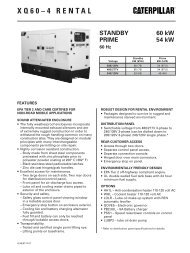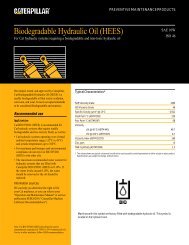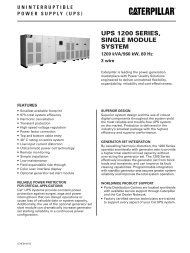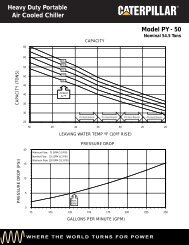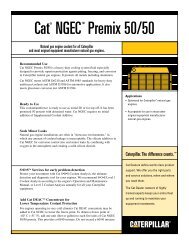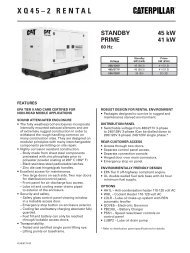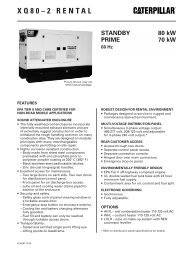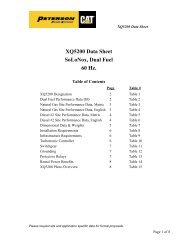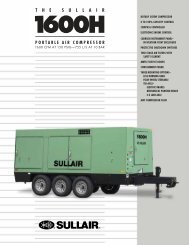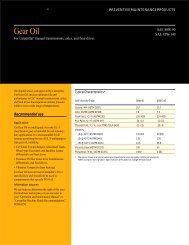Understanding SOS Service Tests - PEHP7076-02
Understanding SOS Service Tests - PEHP7076-02
Understanding SOS Service Tests - PEHP7076-02
- No tags were found...
You also want an ePaper? Increase the reach of your titles
YUMPU automatically turns print PDFs into web optimized ePapers that Google loves.
S·O·S Wear Rate AnalysisPrevent problems and reducecosts by knowing wear ratesWear Rate Analysis is an integral partof our S·O·S <strong>Service</strong>s program that helpsyou maintain equipment performance andmaximize availability. Through regularlyscheduled testing of oil samples fromyour engine, hydraulics and powertrainsystems, Wear Rate Analysis detects tinymetal particles caused by componentwear. By monitoring trends in the typeand quantity of particles, you can getearly warning of problems before majordamage occurs.<strong>Understanding</strong> wear metalsEvery oil-washed system—engines,hydraulics, transmissions, and final drives—produces wear metals in everyday operation.If wear accelerates, the concentration ofwear metal particles increases, signaling aproblem. Wear Rate Analysis allows you tofind problems before they result in majorrepairs or machine failure.Wear Rate Analysis can detect particles thatrange up to about 10 microns in size. Wearmetal concentrations are expressed in partsper-million(or ppm). The S·O·S <strong>Service</strong>sprogram tests for at least nine differentsubstances: copper, iron, chromium, lead,tin, aluminum, molybdenum, silicon andsodium. All are wear metals found inCaterpillar machines and engines exceptsilicon (which generally indicates dirt) andsodium (which indicates water or coolant).Certain elements in a sample may be fromthe oil additive package rather than fromwear within the system. Skilled dealerinterpreters can tell the difference betweennormal elements and those that indicateabnormal wear.Trending wear metalsin your equipmentTwo identical machines under identicalconditions may generate wear particlesat different rates. Our S·O·S interpretershave access to a large database of samplesfor comparison with samples from yourequipment. However, your own machinesprovide the best guidelines for appropriatelevels of wear metals in each compartment.That’s why trending is an essential partof Wear Rate Analysis. After three sampleshave been taken from a particular compartment,a trend for each wear metal isestablished. Our interpreters then comparesubsequent samples to this trend lineto quickly spot deviations as well asmonitor gradual changes in concentrationlevels. This attention to trends also assistswith life cycle analysis, helping youoptimize productivity.The technology behindWear Rate AnalysisWe use an emission spectrometerto perform Wear Rate Analysis.The spectrometer determines wearelements and silicon in a sampleby subjecting the oil to very hightemperatures. At these temperatures,the elements in the sample are“atomized,” with each emitting adifferent wavelength of light energy.An optical system measures andrecords the light energy and calculatesthe results in parts-per-million foreach element.




